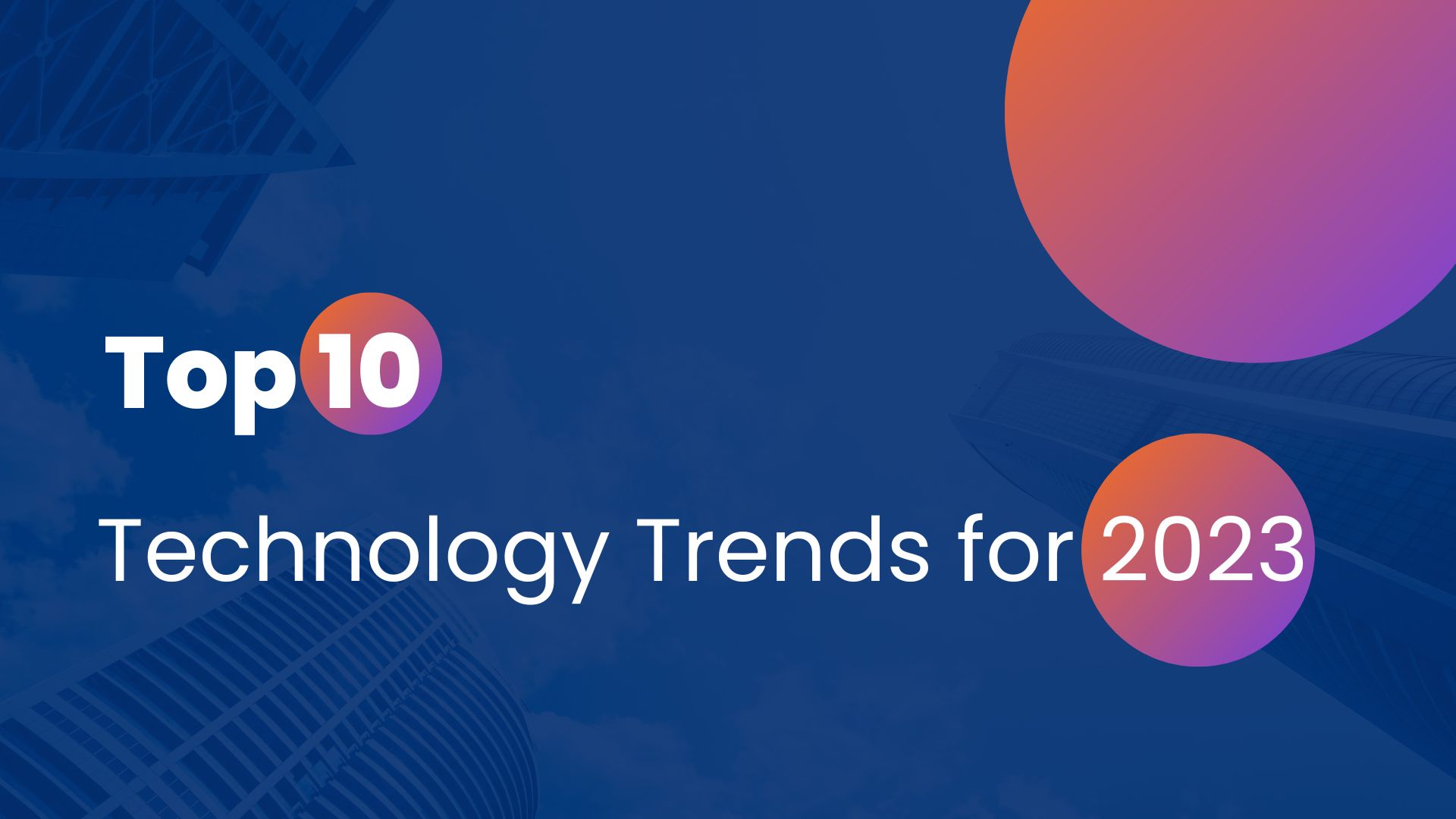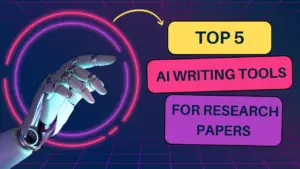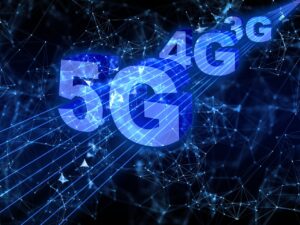This is my first post in the new year – 2023, and I wish you a happy and prosperous new year.
We are living in an information age. New technology is emerging daily to make our lives simpler, more advanced, and better. For business organizations, the new technology reduces costs, enhances customer experiences, and increases returns. Today the speed at which technology is growing is nearly exponential. The technologies that are likely to see significant development in 2023 are:
Artificial intelligence and machine learning (AI & ML)
Artificial intelligence (AI) refers to the capability of machines to perform tasks that require human intelligence, such as recognizing patterns, learning from experience, and making decisions. Machine learning is a class of AI that uses algorithms to automatically improve their performance on a given task over time.
AI and ML have many applications, such as recognizing images and speech, natural language processing, and prediction systems. Many industries, such as healthcare, finance, education, and transportation, use AI and ML.
There are many possible benefits of using AI and ML. They can process and analyze large amounts of data quickly and accurately, automate tasks, and make more informed decisions based on data. At the same time, there are negative impacts of these technologies, such as job displacement and issues related to bias and accountability.
5G communications
5G is the next-generation mobile broadband technology, following 4G. It offers faster speeds, lower latency, and more capacity than previous generations of mobile technology. This enables it to support a broad range of new applications and services.
5G networks operate in a higher frequency range than previous generation, allowing more data transmission over the air, which supports a wide range of high-bandwidth applications, such as virtual reality, remote surgery, and self-driving cars. Additionally, 5G also has a lower latency than previous generations, which means it can support real-time applications requiring rapid communication between devices.
5G networks are still in the process to rolling out around the world and are not widely available. Hence, 5G will become more widely available in the coming years and become the dominant form of mobile connectivity.
Internet of Things (IoT)
The Internet of Things (IoT) connects many devices to the internet, which enables them to send and receive data and interact with one another. These devices include everything from smartphones and laptops to home appliances, vehicles, and industrial equipment.
The IoT can revolutionize a broad range of industries by allowing the collection and analysis of large amounts of data from connected devices and allowing these devices to communicate and coordinate in real time. This can lead to increased efficiency, improved decision-making, and new services and product development.
IoT must address many technical and logistical challenges to fully realize its potential. Some of these challenges include the need to standardize communication protocols, secure the large amounts of data transmitted over the IoT, and address concerns about privacy and the potential for data misuse.
Virtual and augmented reality (VR & AR)
Virtual reality (VR) is a three-dimensional computer simulation environment by which a person can interact in a seemingly natural or physical way, using a special equipment, such as a headset with a screen or gloves fitted with sensors, . In Augmented reality (AR) technology, computer-generated images superimpose on top of a user’s real-world environment, allowing them to see a combination of natural and virtual objects.
VR and AR have a wide range of potential applications, including gaming, education, training, and design. In gaming, these technologies can provide immersive experiences that allow players to feel like they are part of the game world. AR and VR can create realistic simulations that will enable students and trainees to practice skills in a safe and controlled environment in education and training. AR and VR can visualize the design and test ideas before building them in the real world.
VR and AR technologies will become more widely adopted and sophisticated in the coming years. This leads to a wide range of new applications and possibilities for these technologies.
Blockchain technology
A blockchain is a decentralized, distributed ledger technology that records transactions across a computer network. It consists of a series of blocks containing a record of multiple transactions. These blocks adds to the chain using cryptography, and the alteration of block is not possible.
The benefits of blockchain technology include secure and transparent record-keeping without a central authority. This makes it well-suited for use in various applications, including supply chain management, financial transactions, and voting systems.
There are types of blockchains: public and private. Public blockchains are open to anyone and secured through mining. Private blockchains restrict to a specific user group and are do not connect through mining.
Blockchain will revolutionize many industries and has attracted significant attention and investment.
Quantum computing technology
Quantum computing is a computing technology that uses the principles of quantum mechanics to store and process information. Hence, it has the potential to solve specific problems much faster than classical computers. This makes it a promising technology for many applications, including the simulation of complex systems, supply chain optimization, and breaking specific cryptographic algorithms.
Classical computers stores and processes information using bits, i.e., either 0 or 1. But quantum computers use quantum bits, or qubits, which can mean both 0 and 1 simultaneously. This property is known as superposition. Quantum computers use this property to do some operations faster than classical computers.
Quantum computing must address many technical challenges to build practical quantum computers. As there is significant progress in recent years, quantum computers will become more widely available in the coming years.
3D printing technology
3D printing creates a physical object by building it up layer by layer from a digital model, using a 3D printer. This machine that reads a digital file and creates a physical object by depositing material layer by layer according to the instructions in the file. So, it is called additive manufacturing.
3D printing has many potential applications, including producing custom parts and products, creating prototypes for testing and design purposes, and manufacturing small batches of products. It has the potential to revolutionize manufacturing by enabling the production of complex shapes and customized products on demand and by reducing the need for large-scale production facilities. This will create a wide range of new applications and possibilities for this technology.
Autonomous vehicles
Autonomous vehicles, also known as self-driving cars, can navigate and operate without human input. These vehicles use a combination of sensors, such as cameras, radar, and lidar, to gather information about their environment and to make decisions about their movements.
There are several levels of autonomy, ranging from fully to partially autonomous. In fully autonomous vehicles, the vehicle can handle all aspects of driving without human intervention, but in partially autonomous, the vehicle can handle some driving tasks but still requires a human driver to be present and intervene when necessary.
Autonomous vehicles have the potential to completely change transportation and logistics by increasing efficiency and safety and by reducing the need for human drivers. There are challenges like the need to improve the reliability and safety of the technology and the need to address regulatory and legal issues.
Cybersecurity
Cybersecurity is the practice of protecting data, devices, networks, and from digital attacks, theft, and damage. It is a critical concern for individuals, organizations, and governments. The increasing reliance on technology has made accessing sensitive information for cybercriminals and disrupting systems more accessible.
There are many different aspects of cybersecurity, including:
- Network security: protecting the infrastructure that connects devices and enables the communication
- Device security: protecting individual devices, such as computers and smartphones from attack
- Data security: protecting data from unauthorized access or manipulation
- Application security: protecting the software that runs on devices from attacks or exploitation
- Identity and access management: controlling and monitoring who has access to systems and data
Effective cybersecurity needs a combination of technical measures (such as firewalls and antivirus software) and non-technical measures (such as employee training and policy development). Individuals and organizations must stay up-to-date on the latest threats and regularly review and update their cybersecurity measures.
Edge computing technology
Edge computing is a distributed computing model which process and store data at the network edge, closer to the devices generating the data. But in traditional computing models, centralized data centers process and store data.
Edge computing allows processing data faster with low latency, as data need not travel long distances for processing. This is particularly useful for applications that require real-time processing or where there are bandwidth or connectivity constraints.
Examples of applications that can benefit from edge computing include:
- Internet of Things (IoT) devices: Edge computing allows IoT devices to process data locally, reducing the amount of data transmitted to the cloud and improving the system’s responsiveness.
- Industrial automation: Edge computing can process data from sensors and control systems in real-time, enabling faster decision-making and more efficient operations.
- Augmented reality (AR) and virtual reality (VR): Edge computing can process data from AR/VR systems locally, improving the performance and responsiveness of the system.
Edge computing combined with cloud computing allows organizations to use the most appropriate computing model for each application.
Disclaimer: This article is published in good faith and for general information purpose only. Chandras EDU does not make any warranties about the completeness, reliability and accuracy of this information.
If you have any suggestions, comment below or contact us at admin@chandrashaker.com
If you found this article interesting and helpful, don’t forget to share it with your friends.




Pingback: ChatGPT: Can it replace Google? - Chandra Shaker